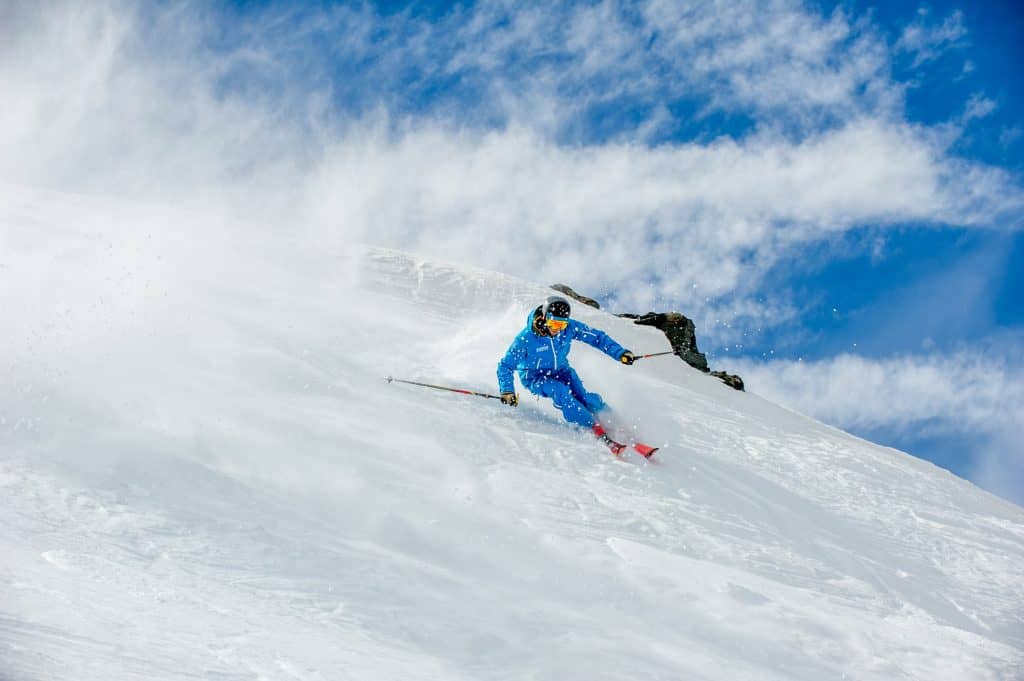
Whether you’re a beginner or a professional, a first race or a new trick, winter sports offer a lot of fun in the snow, but they also bring nerve-wracking challenges.
Overcoming your fears and doing more makes skiing much more rewarding.

So when faced with stress in the snow, knowing to calm the mind and body can help you accomplish more and panic less.
Whether it’s your first descent, learning to ski, making a jump, or taking your first slide, here are some tips to help you keep your hands steady and your mind at ease.
Is skiing knowledge, a stress factor?
Stressed skiers are very often faced with a lack of knowledge about the “how” of what they are trying to achieve.
Nerves are then caused by doubt; a lack of confidence in oneself and in one’s ability to tackle the slope, turn, jump, or ramp ahead.
If you’re unsure about how to handle bumps, how to stop at the bottom of the slope, or how you’re going to land after you’ve made the jump, feelings of stress are completely natural.
Getting answers to your questions and gaining the knowledge to tackle your next challenge is likely to overcome some of these blocks.
This is why ski lessons are a great way to gain knowledge and build confidence to avoid blockages.
Time on the snow
In snow sports, the idea that “time plus knowledge equals confidence” is not new.
But the use of time refers to “training time.”
If you’re having trouble finding the courage to go down the slope you skied perfectly last winter, ask yourself what you’re afraid of.
If you’re worried about controlling your speed, falling, or something else, use your knowledge to identify skiing techniques that can help you overcome those fears.
Then take the time to practice proper technique and gain confidence on a slope below your level.
Control breathing
If you’re trying something new in the snow or haven’t skied in a while, some feelings of panic are inevitable.
If you have the knowledge and take the time to practice, but still feel a little nervous, accept that the stress is part of the thrill.
Move away from the idea that fear is bad, accept your nerves, and focus instead on controlling your breathing.
A calm inhale and exhale will provide your mind and body with the oxygen they need to function.
Focusing on your breathing has a calming effect and will help you relax your (probably tense) muscles.
Relax the body
Calm, steady breathing can help your body relax before you embark on a snow sports challenge, but it’s essential to warm up your muscles first.
In a cold mountain environment, it can be easy to tense up and freeze up.
While movement and layers are the key to staying warm.
If you’re not already pumped from the previous laps, it’s a good idea to take off your skis or snowboard and run in place, or jump.
Once you’re warm, you should feel a little more relaxed.
Actively releasing tension in your body as you exhale is a great way to calm resisting nerves.
Visualize things to do
Once you’ve made all the necessary efforts to prepare yourself for whatever makes you nervous, fill your mind with positive thoughts.
Ignore all the things that make you fear the challenge, because you have the knowledge and the “know-how” to overcome them.
Focusing on the snow sports techniques you will use, visualize yourself, step by step, going down the ski slope or performing the snowboard trick.
Focus only on the things to do and ignore thoughts about the things not to do.
If you have negative thoughts, don’t keep them in mind, distract yourself by singing or listening to music.
Avoid crowds
Sometimes, the way others look at you, coupled with a lack of confidence, is a source of blockage.
Getting up early is a sure way to beat stress in this case.
This allows you to ski the most popular and visible slopes while everyone else is having breakfast.
You will be able to go to the quieter and less visible slopes of the resort.
Many nervous skiers also find resort home runs traumatic at the end of the day.
This is when everyone heads back into town, and the trails are often both bumpy and icy.
The best alternative is to go down the mountain early or, better yet, take one of the ski lifts down.
Erasing memories of past falls
The first time you return to the slopes after an injury is difficult.
However, research suggests that you can make a fear memory harmless.
By recalling the bad memory and then repressing it, you can change your reaction to it.
The best way to do this is through what is called “exposure therapy” with a qualified psychologist.
If you only have a mild mental block, try to reframe the accident and your feelings about it yourself.
Take a dissociated look at the fall or accident and see how you could prevent the same thing from happening.
“What needs to be changed to prevent the same thing from happening again?”
Answering this question will help you unlock any feelings of panic.
Nothing beats the joy of sliding down a ski slope.



